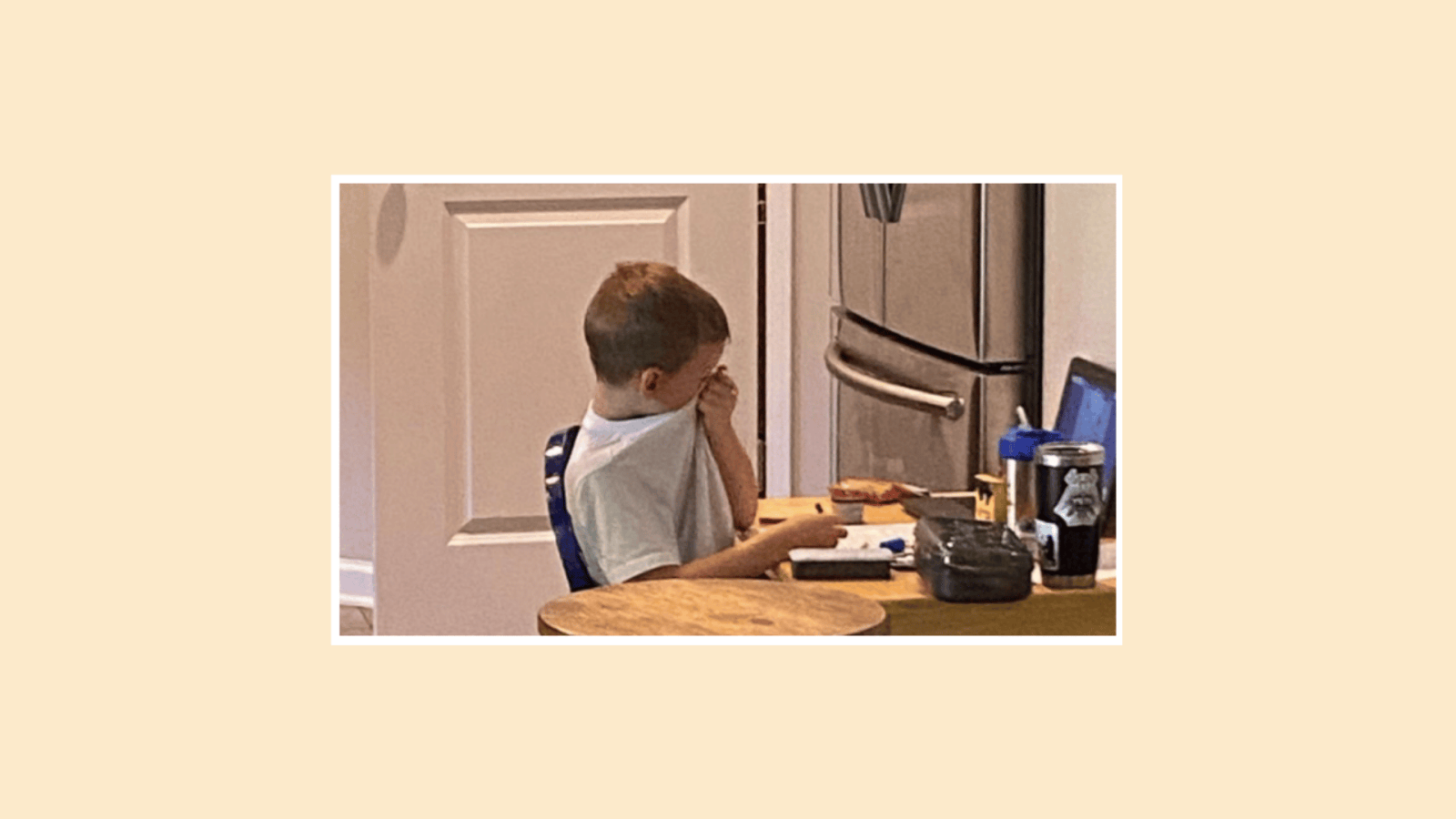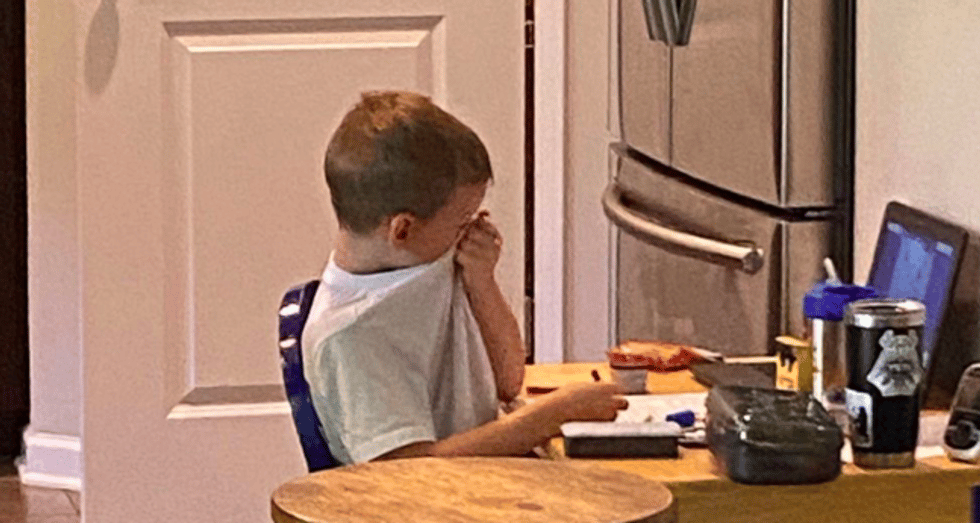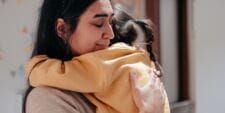This viral photo of a kindergartener crying at virtual school is the reality for so many kids right now

Jana Coombs
This year is just so hard.
Virtual school might keep kids safer from the coronavirus pandemic, but that doesn’t mean it’s easy for kids or parents. A now-viral photo of Jana Coombs’ 5-year-old son shows the struggles of online learning for many young students. In the photo, her son, who is a kindergartener at a school in Coweta County, Georgia, is crying after becoming frustrated during a virtual class. The heartbreaking shot shows him sitting at a desk, pencil in hand, using his t-shirt to wipe his face.
Coombs said she shared the photo to show how difficult remote learning is for many kids and parents. “I just took that picture because I wanted people to see reality,” Coombs told CNN affiliate WXIA. “And then he came over and we hugged and I was crying right along with him.”

Three of Coombs’ four kids are doing online instruction, which she said has been a struggle for everyone—including her and her husband Luke. “A lot of what they’re learning is getting lost in translation because they’re not getting interaction on a personal level,” Luke told WXIA.
In addition to helping their 5-year-old, their 2nd grader, and their 4th grader, she and Luke also have a 7-month-old infant. “Juggling a household, having an infant in the house, getting 5,000 emails a day from all their teachers, trying to keep up … different apps, different codes, different platforms, some links don’t work. You’re running from one laptop to another,” she told WXIA.
Both parents want their kids back in face-to-face instruction, but it’s unclear when or whether that will happen. Coronavirus cases continue to rise across the United States—with outbreaks happening in hundreds of schools that have reopened for in-person instruction.
Despite that, the Trump administration has been pushing to get students back in schools. On August 24, the White House confirmed that it issued new guidance designating teachers as essential workers—a classification previously reserved for medical professionals and law enforcement. President Trump has also claimed that children don’t easily catch or spread the virus. But a recent report by the American Academy of Pediatrics and the Children’s Hospital Association found that the number of child cases jumped 40% in just the last two weeks of July, with 100,000 children testing positive for COVID-19, NBC reported.
But the Centers for Disease Control and Prevention wrote in July that reopening schools in the fall is incredibly important for student health and wellbeing. It noted that the most recent evidence shows that children who are infected with COVID-19 are less likely to have severe symptoms than adults, and that their death rates are much lower.
The CDC also noted “the harms attributed to closed schools on the social, emotional, and behavioral health, economic well-being, and academic achievement of children, in both the short- and long-term, are well-known and significant.” Barriers to successful remote learning are also highest for families with lower incomes and minorities, according to the CDC.
The American Academy of Pediatrics has also called for students to return to classrooms in the fall—but with “policies to mitigate the spread of COVID-19 within schools,” like mask-wearing, sitting at least three feet apart in school, and limiting congregations of adults on school grounds.
As Coombs’ photo shows, the conversation about how to get kids back in school safely is a complex and painful one—for families, educators, and medical professionals. At the end of the day, everyone is just trying to do what’s best for students while also protecting surrounding communities.





































